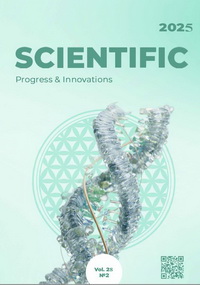Features of coproovoscopic laboratory diagnostics of toxocarosis in cats
DOI:
https://doi.org/10.31210/spi2025.28.02.39Keywords:
parasitology, cats, toxocarosis, nematode eggs, coproovoscopy, efficiency indicatorsAbstract
The causative agents of nematodes of domestic carnivores are able to parasitize in the larval stage in humans and cause a disease called the "larva migrans" syndrome, and have long attracted the attention of medical and veterinary specialists. Larva migrans is a large group of zoonotic diseases, characterized by such features as: humans are an unusual host; pathogens in the human body do not reach the sexually mature stage; the symptom complex is caused by the migration of larvae or immature helminths in the internal organs, human skin, and the influence of their metabolites. Such dangerous invasive diseases include the causative agent of toxocarosis in cats. Therefore, the use of effective methods of coproovoscopic diagnostics of this invasion will make it possible to establish a diagnosis in a timely manner, identify infested animals and prevent human infection. The aim of the work was to establish the effectiveness of well-known and modern methods of coproovoscopic detection of Toxocara cati eggs. The research was carried out in the Laboratory of Parasitology of Poltava State Agrarian University. To compare the effectiveness of methods for diagnosing toxocarosis in cats, the Kotelnikov-Khrenovʼs method (with ammonium nitrate solution), Malloryʼs (with sugar solution), intravital diagnostics of ascarosis, trichurosis, esophagostomosis and metastrongylosis in pigs (with bischofite) and coproovoscopic diagnostics of strongyloidosis in sheep (with a solution of a mixture of calcium and ammonium nitrate – 1 : 1.5) were used. It was established that using all the studied methods, Toxocara eggs were detected. However, the sensitivity of the methods was different and was 53.3–100.0 % for the Kotelnikov-Khrenovʼs method, 46.7–100.0 % for Malloryʼs, 60.0–100.0 % for post-mortem diagnostics of ascarosis, trichurosis, esophagostomosis, and metastrongylosis of pigs, 73.3–100.0 % for coproovoscopic diagnostics of strongyloidosis of sheep. The highest values of the intensity of toxocarosis invasion were detected when exposing stool samples for 15 min using the method of a mixture of calcium and ammonium nitrate solutions (55.2 eggs/g), where its effectiveness exceeded the method with ammonium nitrate solution by 18.8 %, the method with sugar solution by 26.9 %, and the method with bischofite by 12.1 %. The obtained data allow us to recommend a method of coproovoscopic diagnosis of strongyloidosis in sheep for effective and rapid intravital coproovoscopic diagnosis of toxocariasis in cats.
Downloads
Published
How to Cite
Issue
Section
License
Copyright (c) 2025 Scientific Progress & Innovations

This work is licensed under a Creative Commons Attribution 4.0 International License.

 Creative Commons Attribution 4.0 International Licens
Creative Commons Attribution 4.0 International Licens